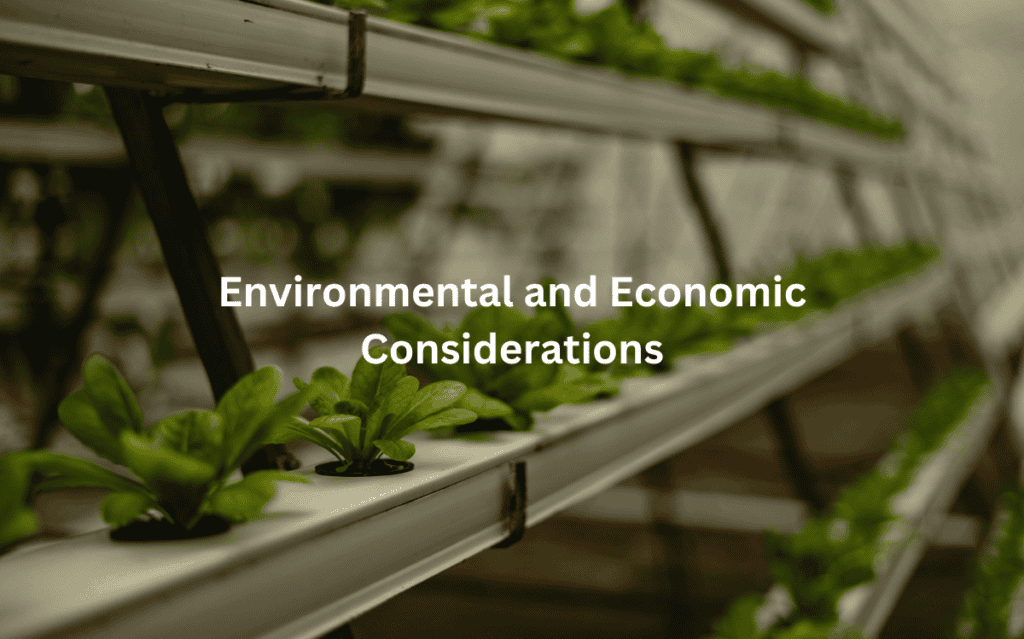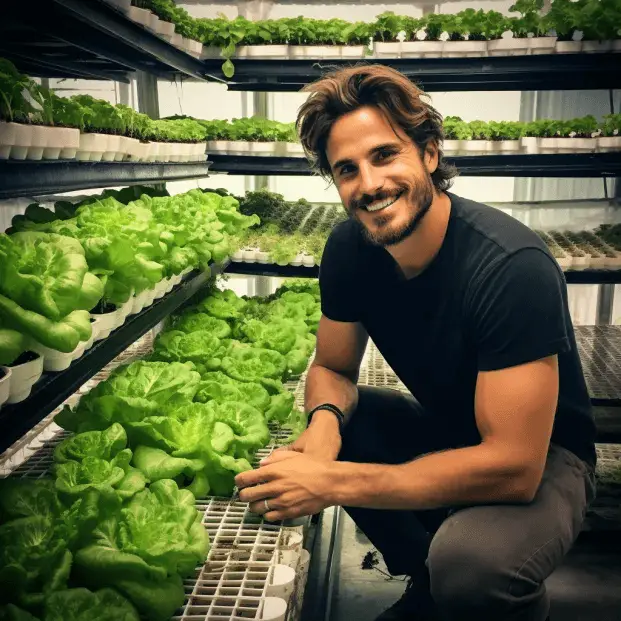Picking the right grow media is super important for long-term success in hydroponics and aquaponics (1). Grow media are what support plant roots, keep moisture, and supply nutrients. Some popular types are coconut coir, perlite, and rock wool. Each one has special benefits, like good airflow and the ability to hold water.
When you choose a growing media, think about how it will affect plant health and how well your system runs over time. A good mix can help your plants grow better and cut down on how often you need to replace the media. Keep reading to find out more about which grow media can help you reach your sustainable gardening goals and boost your harvest!
Key Takeaway
- Durability and Reusability: Pick grow media that can last through many growing cycles without breaking down or losing their benefits.
- Nutrient and Water Management: The best grow media should hold onto moisture and nutrients but still let water drain and air flow smoothly.
- Environmental Impact: Choose sustainable growing substrates that support eco-friendly practices and help lower the environmental footprint of your gardening.
Understanding Grow Media
Plant roots display an almost instinctive determination in their search for stability. In hydroponic systems, where traditional soil isn’t present, grow media becomes the critical foundation for plant survival (2). These specialized materials serve as more than just anchors – they’re the cornerstone of successful hydroponic cultivation.
Physical Support
Grow media’s main job is to hold plants up. In hydroponic systems, where water moves a lot, it’s super important for plants to have a solid stand. Good grow media keep their shape even after many grows, so roots can have something stable to grab onto.
Stone wool cubes are a good pick because they give roots a strong, safe place to grow. They’re dense and help keep everything in place. Clay pebbles are another option. They’re really great for bigger roots that spread out. They let roots breathe while still giving support.
Lava rock is also a strong choice. It stays in shape for a long time, keeping its support season after season. These options help plants stay healthy and sturdy throughout their growth cycles. If you’re picking grow media, think about how much support and structure your plants need.
Water Management
Proper moisture balance stands as one of the most critical aspects of media selection. The best growing media maintains optimal water retention while preventing oversaturation:
- Clay pebbles retain approximately 30% water volume
- Perlite holds four times its weight in water
- Coco coir maintains consistent moisture levels
Nutrient Delivery
Growing media plays a crucial role in nutrient availability and retention. Different materials interact uniquely with nutrient solutions:
- Buffered coco coir excels at calcium and potassium retention
- Vermiculite effectively stores micronutrients
- Stone wool provides consistent nutrient distribution
Aeration
Root oxygenation depends heavily on media structure. Effective growing media creates spaces for air movement while maintaining moisture. The most reliable options include:
- Perlite’s natural air pockets
- Clay pebbles’ inter-particle spacing
- Lava rock’s internal porosity
Successful hydroponic cultivation depends on selecting media that balances these four critical factors. Each growing environment presents unique challenges, making media selection a crucial decision in system design.
Types of Grow Media for Long-Term Use
Selecting the right growing media stands as one of the most critical decisions in hydroponic cultivation (3). Durability and performance over multiple growing cycles determine the true value of these materials in commercial operations.
Stone Wool (Rockwool)
Stone wool remains an industry standard, particularly in commercial operations. Its consistent performance and reliable structure make it a preferred choice for professional growers.
- Maintains 90% water retention capacity
- Stabilizes at pH 7.5 after initial treatment
- Lasts 3-4 growing cycles with proper maintenance
Expanded Clay Pebbles
These versatile aggregates provide exceptional durability and reusability in hydroponic systems:
- Offers 40% air-filled porosity
- Resists pest infestations
- Maintains structural integrity for 5+ years
- Ideal for ebb and flow systems
Perlite and Vermiculite
These lightweight materials serve different but complementary functions:
- Perlite maximizes aeration
- Vermiculite excels at nutrient retention
- Both materials support rapid root development
Lava Rock
Natural volcanic rock provides unmatched longevity:
- Maintains consistent porosity
- Offers 10+ years of service life
- Provides neutral pH (6.5-7.0)
Each medium presents unique advantages for specific growing scenarios, making careful selection essential for long-term success.
Essential Characteristics for Long-Term Grow Media
Selecting the right growing media is a major key to success in any hydroponic system. Good media have both physical and chemical properties that help them perform consistently through many growing cycles.
Physical Durability
Strong grow media hold their shape even with constant moisture exposure. Clay pebbles, for example, can last through 8–10 growing cycles without falling apart. Lava rock is another tough option, showing very little breakdown even after 5 or more years. Stone wool also holds up well, typically supporting 3–4 seasons of steady growth.
Chemical Stability
For long-term use, media also need to stay chemically stable. Ideal media keep their pH levels between 5.5 and 7.0, giving plants a safe and steady environment. They shouldn’t hold onto nutrients too much, and they must resist salt buildup over time, which can otherwise damage plant health.
Performance Metrics
High-performing grow media must balance important factors for plant success. They need to hold 30% to 90% water while keeping 20% to 30% air space for healthy roots. Good media let roots attach strongly and drain water quickly but shouldn’t dry out too fast.
When you clean and store these media correctly, they can last through several growing cycles. This makes them a smart investment for the future.
To keep your hydroponic system performing well, focus on effective media management. Regular cleaning, proper storage, and monitoring conditions can help keep your plants thriving over time. Keep reading to learn more!
Storage Protocols
Environmental control proves essential for media preservation:
- Store in dry, covered areas above ground level
- Maintain temperatures between 40-80°F
- Protect from direct sunlight exposure
- Use moisture-resistant containers
Cleaning Procedures
Regular maintenance extends media lifespan:
- Rinse thoroughly between growing cycles
- Soak in hydrogen peroxide solution (3%)
- Remove organic debris and salt buildup
- Air dry completely before reuse
Testing Requirements
Consistent monitoring prevents system failures:
- Check pH levels monthly
- Measure EC values weekly
- Assess physical structure quarterly
- Test drainage capacity seasonally
Economic Benefits
Proper maintenance delivers significant cost advantages:
- Reduces replacement frequency by 50%
- Lowers annual operating expenses
- Minimizes system downtime
- Extends media service life
Regular maintenance protocols protect initial investments and ensure optimal growing conditions. Professional operations particularly benefit from structured maintenance schedules, seeing reduced media replacement costs and improved crop consistency.
Environmental and Economic Considerations

Throwing away broken, soggy grow media is not only messy but also a waste. Choosing sustainable growing substrates helps in many ways. Reusable options like perlite or clay pebbles can save you up to half on replacement costs over five years if you take care of them.
Eco-friendly grow media like coconut coir or recycled glass benefit the environment too. This is especially good for urban farming because it reduces your carbon footprint and helps local ecosystems thrive. Plus, lighter media cut down shipping costs for big farms.
To make the most of your grow media, choose wisely, store it dry, test it twice a season, and clean it well. This approach will be better for your plants and your wallet. Keep reading for more tips on selecting the best substrates!
FAQ
How do hydroponic grow media and sustainable growing substrate affect long-term plant support?
Using good hydroponic grow media and sustainable growing substrate helps plants stay strong over time. They don’t break down fast, so your plants have steady support.
What should I know about reusable grow medium and substrate durability for soilless cultivation?
A reusable grow medium that’s tough saves you money. In soilless cultivation, strong media last longer, so you don’t have to keep replacing them.
How does coco coir longevity compare to other soil alternatives for plants?
Coco coir has great staying power compared to other soil alternatives for plants. It lasts a long time, so you don’t need to change it as often.
Can I use perlite for hydroponics and still get good moisture retention media benefits?
Perlite for hydroponics is great for air flow but dries fast. Mix it with other media to hold more water and keep roots healthy.
Are expanded clay pebbles a good lightweight plant substrate for long-term use?
Expanded clay pebbles are light, drain well, and last a long time. They’re perfect if you want media that hold up over many growing seasons.
Is rockwool cubes reuse safe for sustainable gardening solutions?
You can reuse rockwool cubes if you clean them well. This helps keep your garden healthy and supports sustainable gardening solutions.
What makes an inert growing medium ideal for media for aquaponics?
An inert growing medium doesn’t mess with the water or nutrients, which is why it’s perfect for media for aquaponics. It keeps both plants and fish happy.
How important is media pH stability and nutrient retention media in recirculating hydroponics?
Media pH stability and nutrient retention media are super important in recirculating hydroponics. They keep the water balanced and roots strong.
Can organic grow media still be a pest-resistant substrate and disease-free grow media?
Yes! Organic grow media can fight pests and stay disease-free if you clean and take care of it properly.
What biodegradable grow medium options work best for media for container gardening?
Biodegradable grow medium like coco coir is great for container gardening. It gives plants good support and breaks down naturally over time.
How do water-efficient grow media and eco-friendly grow media work for urban farming?
Water-efficient and eco-friendly grow media help save water and cut down waste. They’re perfect for growing plants in cities or small spaces.
What role does soilless potting mix and inert substrate for plants play in indoor gardening?
Soilless potting mix and inert substrate give indoor plants a clean, safe space to grow, without the problems you sometimes get with soil.
Why should I consider low-maintenance grow medium and media for root vegetables?
A low-maintenance grow medium makes it easier to grow root vegetables. It cuts down on work while helping heavy feeders like carrots grow strong.
Conclusion
Choosing the right grow media is vital for sustainable plant cultivation over the long haul. Durable options like rockwool, expanded clay, and lava rock strike a balance between support and water management. Proper storage and periodic testing help maintain their effectiveness across multiple cycles. This not only boosts plant health but also supports environmental sustainability.
Related Articles
- https://tophydroponicgarden.com/choosing-the-right-hydroponic-media/
- https://tophydroponicgarden.com/importance-of-ph-in-hydroponics/
- https://tophydroponicgarden.com/pros-and-cons-of-different-hydroponic-media/
References
- https://gpnmag.com/article/growing-media-handling-guide/
- https://www.greenhousegrower.com/production/media/10-must-know-growing-media-facts/
- https://icl-growingsolutions.com/en-ie/agriculture/news-and-events/
Was this helpful?

I’m Barrie L., a passionate hydroponic gardening enthusiast dedicated to cultivating thriving, soil-less gardens. With a focus on all things hydroponic, I share my expertise on innovative growing techniques and sustainable practices through my blog, tophydroponicgarden.com. As a seasoned hydroponics specialist, my goal is to inspire and guide fellow gardeners in harnessing the power of water-based cultivation for bountiful and eco-friendly harvests. I’m also an author of the book “Hydroponics For Absolute Beginners: Your Step By Step Guide For How To Create An Hydroponics System At Home Without Soil, For Growing Vegetable, Fruit And Herbs.” which is sold on Amazon. Join me on a journey of redefining the way we cultivate plants, one nutrient-rich solution at a time. Happy growing!


